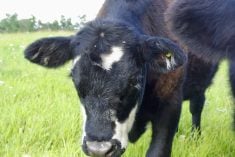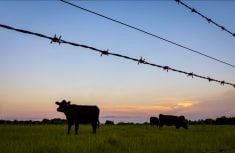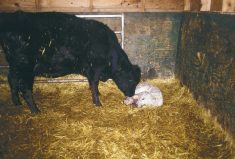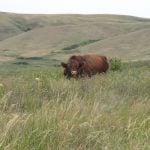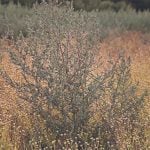Vibriosis is an important venereal disease of cattle caused by the organism Campylobacter fetus. Some refer to the disease as campylobacteriosis. In sheep, it may be referred to as enzootic abortion, not associated with venereal transmission as much as ingestion of contaminated water and feed. Typically, the disease causes female infertility, with an increased number of services necessary for conception. Cows will often go through several cycles then recover spontaneously, become pregnant and carry a calf to term. But by then she is out of sync with the herd’s rebreeding schedule. In sheep, late abortion is a primary sign, with prolonged reproductive recovery.
Read Also

Effect of wildfire smoke on respiratory health in beef cattle
Of all domesticated species, cattle have the smallest relative lung capacity, making them particularly vulnerable to wildfire smoke.
In cattle, the disease is introduced and spread by infected bulls when they mate with susceptible cows and heifers. Once infected, bulls remain asymptomatic carriers of campylobacter for life, which presents a major control issue for free-ranging herds on pasture. Late abortions are not uncommon, representing another source of disease spread in herds gathered in feed yards.
Vibriosis is somewhat self-limiting as most females recover within a year. Disease carriers are not uncommon, however, and new infections can spread to non-exposed animals. Vibriosis is best controlled by vaccination, which renders animals highly resistant to infection. Vaccination involves two injections, four to six weeks apart in the first year, and a single dose of vaccine each year thereafter. Vaccination should be completed four weeks before breeding. Vibriosis vaccine is often combined with a vaccine for leptospirosis.
Artificial insemination is also valuable in limiting disease spread. Most organizations test the semen to assure that it is free of vibriosis and trichomoniasis.
Campylobacter fetus persists in the genital tract of infected cows, localizes in newly developing cotyledons in the uterus and produces necrosis. Abortion occurs when the infection becomes extensive. In bulls, the infection persists in the genital tract (preputial folds) without producing any noticeable damage.
The disease creates economic losses due to the reduced size of the calf crop, reduced weaning weights because of late calves and costs associated with diagnosing, culling and replacing infected cattle.
Vibriosis presents a confusing array of symptoms, such as repeat breeding with variable lengths between return to heat, sometimes confused with inadequate bull power, as well as some late-term abortions. Herds with smouldering infections will see extended calving intervals. When bulls are pulled early, there will be open cows. Cows will clear infections after two or three cycles, but by then pregnancies are spread out.
Often the disease remains undetected until late fall when livestock owners recognize several females exhibiting estrus. Pregnancy checks reveal an inconsistent pregnancy rate and stage of gestation. A tentative diagnosis can be made based on herd history and confirmed by laboratory means. Working with a veterinarian becomes important for diagnosing vibriosis and reaching decisions on how individual herds can see their way through a wreck.
Most cases or outbreaks occur with recent introductions of an infected bull or cow into a susceptible breeding herd. Both trichomoniasis and vibrio are transmitted through breeding and need to be considered in the diagnostic scramble. With both diseases, an infected cow serves as a source of infection for other non-infected bulls and, subsequently, other cows. Virgin bulls and clean replacement heifers become critically important in many herds, especially purebred herds wishing to sell breeding stock.
Vaccination limits the economic effect of vibriosis and a continuing vaccination program for bulls and heifers is highly recommended. Vaccination should start as soon as genital campylobacteriosis is diagnosed. Infected cows and cows at risk should be vaccinated. Decisions regarding the appropriate time to immunize the breeding herd against campylobacteriosis need to be discussed with a veterinarian.
Vaccination of infected cows hastens the elimination of C. fetus and, although cows may remain carriers, fertility is greatly improved. Vaccination involves two injections, four to six weeks apart in the first year, and a single dose of vaccine each year thereafter, about four weeks before breeding starts.
Because antibody responses are short-lived, cows can be revaccinated halfway through the breeding season when the threat justifies it. Some veterinarians recommend bulls be vaccinated for the same reason as cows i.e. for treatment as well as for prophylaxis, but given twice the dose used for cows, three weeks apart. Another approach in positive herds includes either culling all bulls, or testing and culling positive bulls and replacing them with virgin bulls. The use of artificial insemination is also valuable in limiting disease spread.
In summary, an integrated approach to prevent vibriosis involves at least the following:
- Culling all open cows
- Reducing the age of bulls
- Keeping the breeding season reasonably short
- Vaccination







